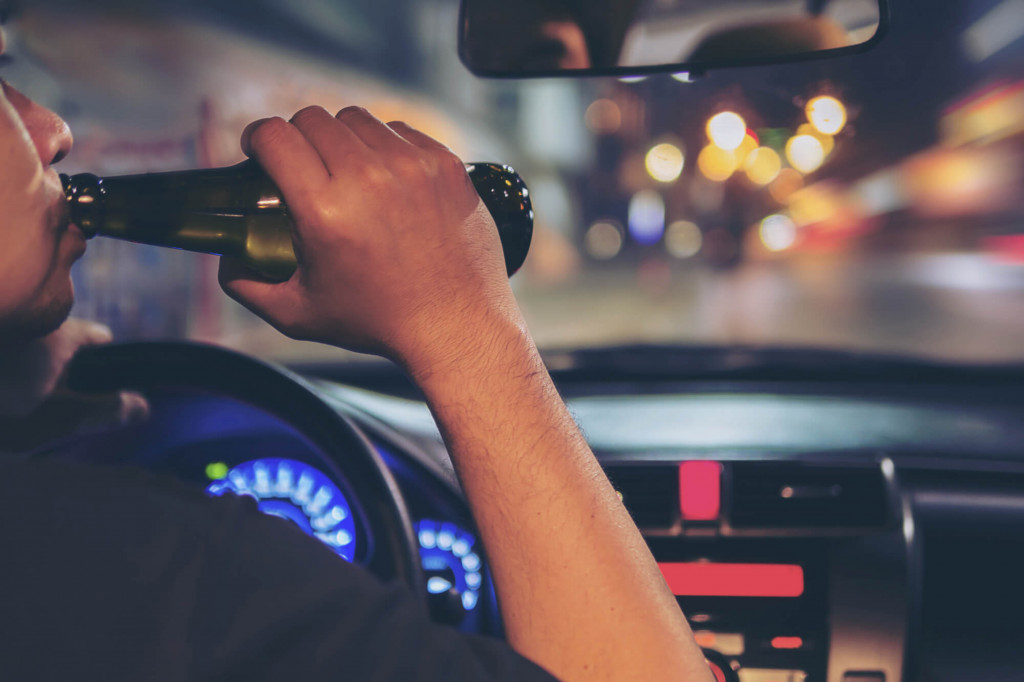
And why, in those moments, “driving while black or brown” may mean something more than just intoxication risk
At GoVia, our mission is to support safe, clear-headed driving—especially in situations where the driver remains sober but passengers might be drinking. These scenarios, while legally complex, bring into focus two important issues: 1) the rules around open containers in vehicles, and 2) how race and ethnicity influence traffic enforcement outcomes. Below we’ll walk through both topics, and why a service like GoVia can help mitigate risks for everyone.
Open Container Laws: What You Need to Know
In the U.S., laws about open alcoholic beverage containers in vehicles vary significantly from state to state. Here are the key points:
- Generally, open container laws prohibit possession or consumption of any open alcoholic beverage container in the passenger area of a motor vehicle. (FindLaw)
- The federal standard (via Transportation Equity Act for the 21st Century, TEA-21) encourages states to prohibit open containers throughout the passenger compartment of any vehicle on a public highway. (FindLaw)
- Some states or localities provide special exceptions:
- A handful of states allow passengers (but not drivers) to have open containers. For example: Connecticut, Delaware, Missouri, Mississippi do not prohibit passengers from having open containers in vehicle passenger area. (NCSL)
- Others also exempt passengers: Tennessee, Virginia, Rhode Island. (LosAngelesDUIAttorney.com)
- One example: In Florida, the law states that it’s unlawful for both drivers and passengers to have an open container in the passenger area. Even if parked, the open container must be in a locked glove compartment, trunk, or other locked non-passenger area. (Carey Leisure Carney)
- Why this matters: Open-container laws are tied to preventing alcohol-impaired driving and reducing alcohol-related vehicle fatalities. Some research suggests the implementation of these laws is associated with reductions in fatal crashes. (Responsibility.org)
Bottom line for drivers & passengers: If you’re driving and remain sober but passengers are drinking, it’s important to make sure that any open containers are stored in accordance with state law — ideally out of reach (e.g., in trunk or locked compartment) or avoid the situation altogether. Failing to comply could expose the driver (and possibly the passengers) to legal risks—even if the driver is sober.
Why GoVia Services Matter in This Context
When the driver is sober but the passengers are drinking, typical scenarios that GoVia can help with include:
- File documentation / incident reporting: If you sense a situation might escalate (e.g., passengers becoming intoxicated, vehicle pull-over risk), using GoVia to log who is present, who is drinking, and how the driver is handling the situation can provide a layer of protection.
- Safe transit arrangement: If the passengers’ drinking might distract the driver or impair safe driving indirectly (e.g., rowdy behavior, needing to intervene), GoVia can help coordinate alternative transport (rideshare, additional driver, etc.).
- Pre-emptive awareness: Educating drivers and passengers about how open-container laws vary by state can reduce unforced errors (e.g., “we’re just relaxing, we’re parked” isn’t necessarily safe legally).
- Risk-aware planning: If your group is entering a state or locality with looser container laws but heavy police enforcement, GoVia can help plan the safest approach (e.g., designate a driver, store containers properly, choose the right time/place).
Driving While Black or Brown: A Closer Look at Racial Disparities
Beyond the legal technicalities of open-container laws, there’s a critical overlay: the fact that driving while Black or brown often carries additional risk of being pulled over, searched, or subjected to more intensive enforcement — independent of actual violations.
Some of the key research findings:
- According to the Stanford Open Policing Project, in analyses of ~100 million traffic stops, Black drivers were about 20 percent more likely to be stopped than White drivers relative to their share of the residential population. (Journalism Program)
- In California’s largest law-enforcement agencies’ data: Black drivers made up roughly a third of traffic stops during midnight-3 a.m., about twice the share of White drivers; yet they were less likely to have contraband discovered, suggesting stops were less about safety violations and more about discretionary enforcement. (Public Policy Institute of California)
- The Center for Policing Equity found that Black drivers are more likely to be stopped for non-safety reasons (so-called “pretextual stops”), searched more often, and more often subject to force—even though contraband discovery rates are similar or lower than for White drivers. (Policing Equity)
- In the city of Cleveland (relevant to you), in 2023 data: Black people were searched more than three times as often as White people during traffic stops—even though they were found with contraband at roughly the same rate. (The Marshall Project)
What this means in the open-container scenario:
When you combine a scenario where open containers are present (even if the driver is sober) with the heightened risk of enforcement for Black or brown drivers, here are some practical take-aways:
- Even a minor vehicle condition (such as an open container in passenger reach) can give an officer a “reasonable” reason to stop a vehicle or to investigate further. When drivers are Black or brown, the threshold for initiating the stop may de facto be lower (based on aggregate data).
- Once stopped, Black or brown drivers may face more intensive scrutiny or searches, which increases exposure and risk — even if no violation of DUI law occurs.
- For a service like GoVia, this means there is added value for clients who are Black or brown drivers (or transporting Black or brown passengers) in pre-emptive risk management: more vigilance about vehicle conditions, storage of containers, the behavior of passengers, and how the driver presents.
Practical Advice for Drivers, Passengers, and Communities
- Driver stays sober, obviously. But also:
- Make sure that open containers are not in the driver’s reach or passenger compartment — place them in the trunk or locked compartment if required by your state.
- Establish a clear understanding with passengers: if they will be drinking, how will you handle the transition back to the vehicle? Will you reload the vehicle when the driver is not exposed?
- If you’re driving through or in a state with stricter laws (e.g., Florida), err on the side of caution: open container = risk. (Carey Leisure Carney)
- Passengers should respect the driver’s role: Even if the law allows open containers for passengers in your state, remember: drunk passengers can still distract the driver, impair judgment, or create hazard.
- Know your state/local law:
- Many states prohibit open containers in the passenger area entirely. (NCSL)
- A few states allow passengers but still prohibit drivers. (World Population Review)
- Enforcement practice matters: variation in how police handle open container violations means that risk isn’t purely theoretical.
- If you’re Black or brown (or transporting Black or brown passengers):
- Recognize that the empirical data indicate heightened enforcement risk in traffic stops.
- Using GoVia for documentation or planning can help mitigate some of that risk (e.g., by logging who was in the vehicle, what was stored, what route you took).
- Keep the vehicle in the highest compliance state possible so that you reduce any trigger for a stop beyond the passenger drinking.
- Community awareness & education: Remind others that safe driving goes beyond “don’t drink and drive”. The driver being sober is necessary, but the environment — what’s in the car, who’s drinking, how the vehicle is managed — also matters. Services like GoVia exist to support those holistic safety choices.
How GoVia Adds Value
At GoVia, our value proposition in this context is strong:
- We offer risk-aware consultation: If you know you’ll be transporting passengers who will drink, we can help you plan ahead (route selection, timing, storage of alcohol, contingency ride).
- We provide incident and log support: In case of a stop or checkpoint, having a documented record of who was in the vehicle, that the driver was sober, and the alcohol was stored in compliance helps reduce ambiguity.
- We help reinforce community trust and safety messaging: When drivers — especially drivers of color — show that they are taking proactive steps to manage risk, it helps reduce the chance that “open container” becomes a pretext for broader scrutiny.
- We promote education and awareness: Many drivers underestimate how state laws vary or how enforcement may differ for Black and brown drivers. By educating our clients, we raise the standard.
GoVia’s Closing Thoughts
While many drivers understand the risks of driving after drinking, fewer realize how intricate the rules become when passengers drink and the driver remains sober — and how those risks are intertwined with race, vehicle condition, and enforcement patterns.
For Black and brown drivers, the stakes are even higher because of documented disparities in traffic stops, searches, and use of force. In other words: even if you’re doing “everything right” (driver sober, passengers drinking, open containers supposedly allowed for passengers), you are not operating in a vacuum. Every factor — the vehicle’s condition, how the alcohol is stored, how the driver interacts with law enforcement — can tilt the risk.
At GoVia, our mission is to make those variables manageable. You focus on being the safe and sober driver; we help you plan, document, and minimize risk for every passenger, route, and moment. Because safe driving isn’t just about the driver’s BAC. It’s about the whole ride.




